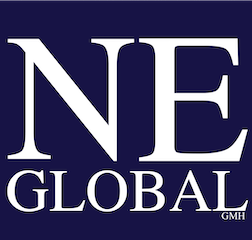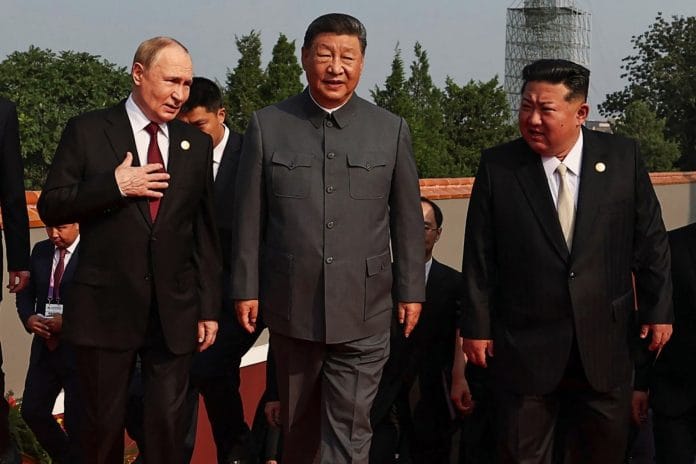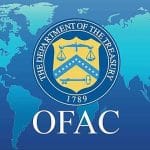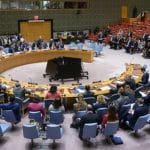With the UN General Assembly in New York less than a month away, China’s leadership was able to grab global attention for many days in early September with a series of high-level meetings and events stretching from August 31 to September 3, namely the Shanghai Cooperation Organization (SCO) Summit in Tianjin and the massive Victory Day parade in Beijing.
By carefully coordinating these two major events and convincing numerous world leaders to attend, Beijing was able to orchestrate an image of global influence several times greater than facts would otherwise support, with only a few indicators of real progress visible for those who care to look carefully. But many of the world’s commentators apparently lost themselves in Beijing’s carefully constructed web of shadows and symbols describing the rise of a new non-Western world order, which is of course what China’s high profile global summit, and its massive military parade was designed to do.
Tianjin SCO Summit
The SCO Tianjin Summit 2025 was the 25th Heads of State Council meeting of the Shanghai Cooperation Organization (SCO), which was held from August 31 to September 1, 2025, in Tianjin, China. It was the largest summit in the SCO’s history, and marks the fifth time that China hosted the meeting.
The Shanghai Cooperation Organization is not a new organization; it is the successor to the Shanghai Five, formed in 1996 between China, Kazakhstan, Kyrgyzstan, Russia, and Tajikistan. In June 2001, the leaders of these nations plus Uzbekistan met in Shanghai to launch the new organization with a focus on deeper political and economic cooperation. The SCO Secretariat is based in Beijing with a smaller office in Tashkent, Uzbekistan focusing on counterterrorism and intelligence sharing.
Now comprising ten members, and numerous observers, the SCO is the world’s largest regional organization in terms of geographic scope and population, covering approximately 24 percent of the world’s total area (65 percent of Eurasia) and 42 percent of the world’s population. As of 2024, its combined nominal GDP accounts for around 23 percent of the world’s total, and more (36 percent) when measured in terms of purchasing power parity (PPP).
In 2017 India and Pakistan officially joined the SCO as full members, bringing into the organization two economically important but not ex-Soviet or former communist member states. The SCO’s newest full members are Iran and Belarus, not renowned for their economic progress or new technologies but situated in strategic locations.
The 2025 Summit was used as a diplomatic platform by both Beijing and Moscow. China sought to signal its growing geopolitical influence and its ambition to redefine global norms, while positioning China as a leader of the so-called “Global South” and a counterweight to U.S.-led frameworks, helped of course by U.S. President Donald Trump’s penchant for generating new global disruptions almost monthly.
Chinese President Xi Jinping’s friendly interactions with Russian President Vladimir Putin and the warm rapport shown with Indian Prime Minister Narendra Modi — in view of Modi’s current difficulties with Trump over Russian oil purchases and the ongoing bilateral trade dispute — served to reinforce Beijing’s growing regional influence and prompt talk of some new form of Eurasian economic unification, especially by anti-Western pundits.
A potential shift for Russian gas flows could signal a stronger Eurasian bloc
Russia and China signed on September 2 a Memorandum of Understanding (MoU) to move ahead with Power of Siberia 2 gas pipeline through Mongolia with a capacity of 50 billion cubic meters (bcm) and roughly the same as either Nord Stream 1 and Nord Stream 2. Moscow hopes to replace its lucrative but lost European market but the price China would pay for the Russian gas remains a thorny issue.
When complete, Russia’s total gas exports to China will be 94 Bcm, comprising 44 Bcm from PoS1, 10 Bcm from the new Sakhalin pipeline (from 2027) and 50 Bcm via PoS2. Commercial terms have not been announced.
Victory Day Military Parade
Following the SCO Summit, Act Two for President Jinping was the September 3 Victory Day Military Parade in Beijing commemorating the 80th anniversary of the end of the WW2 fighting in the Pacific theater. Far from a mere ceremonial spectacle, China worked hard to showcase its strong alliances as well as tease its new military technology. On the political front, Xi stood flanked by Russia’s Putin and North Korea’s Kim Jong-un — projecting a message some have labeled “authoritarian solidarity” as well as signaling deepening strategic alignment among the celebrants. Certainly, strategic alignment is needed as western economic sanctions on all three countries are tightening (applied in varying degrees), for supporting Putin’s Ukraine war effort.
Interestingly though, India’s Modi opted not to attend the Beijing parade and instead returned to New Delhi September 1 after an extended conversation with Russia’s Putin in Tianjin.
In terms of messaging, Xi declared that China’s rise is “unstoppable,” while portraying his nation as a peaceful, sovereign leader — albeit sending veiled challenges to the West and its allies.
In regard to military capabilities, more than 12,000 troops and advanced military hardware including new hypersonic missiles, stealth drones, and robotic systems appeared in the Beijing parade, demonstrating China’s new capabilities, the kind of weapons systems that cause nightmares for western defense attaches posted in Beijing. China also displayed its capabilities for delivering nuclear weapons via land, sea, and air, marking a full nuclear triad for the first time. Major questions remain however, regarding integration and readiness of the new Chinese weapons systems.
Meanwhile, as China worked hard to carefully prepare its massive spectacle and global messaging, U.S. President Trump spent his summer disrupting almost everything in the current world economic order, but without reaching the major peace agreements he often hinted were imminent.
At least he took a few minutes off from his usual routine to comment on the Beijing events.








